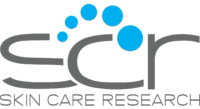Do you sweat much more than other people? Excessive sweating, also known as hyperhidrosis, is a condition that can cause you serious embarrassment and put a damper on your social, romantic, and business relationships. Stained clothing is another major problem if you excessively sweat.
Hyperhidrosis happens in the armpits, as well as on the hands, feet and groin because these areas have high concentrations of sweat glands. An estimated 2% to 3% of Americans have the condition.
Why Hyperhidrosis Clinical Research Is Important
More clinical research is needed to help improve treatment advances and increase the medical understanding of excessive sweating. Important areas of understanding and treating hyperhidrosis include:
- Evaluating the effectiveness of current treatment options
- Determining the best practices for the best results
- Evaluating cutting-edge new therapies
- Learning the side effects of different therapies
- Evaluating the practical aspects and costs of treatment, so dermatology clinics know best how to incorporate treatments for their patients (for all skin types) to get the best results at the lowest costs
Customizing Treatment for Different Skin Types
There are 4 common skin types: normal, oily, dry, or a combination.
Each of these skin types has unique characteristics:
- Normal indicates balanced skin that’s not too oily or not too dry. Normal skin is commonly found in younger people.
- Oily describes the skin type that produces a lot of sebum (an oily secretion of the sebaceous gland). The overproduction of sebum is known as seborrhea.
- Dry indicates skin that makes less sebum compared to normal skin. As a result of too little sebum being produced, dry skin doesn’t have the lipids it needs to hold moisture and to protect the skin against external elements.
- Combination, as the name indicates, is skin consisting of a mix of skin types.
Since there are 4 different skin types, hyperhidrosis treatment needs to be studied and customized for each particular skin type. During a clinical research study, a wide range of people with different skin types makes for a more effective study outcome.
Benefits of Clinical Research at SCR (Skin Care Research)
Skin Care Research is a leading South Florida-based clinical research center with over 25 years of experience in carrying out clinical trials.
If you’re considering taking part in an SCR study, you’ll enjoy the following benefits:
- You’ll receive top care from the SCR team made up of top dermatologists and skin care specialists under the guidance of principal investigator, Dr. Eduardo Weiss.
- You’ll have access to the newest cutting-edge innovative therapies that can help treat your skin condition, if other ways of treating your skin have failed to produce the desired results.
- For certain trials, your treatment could be free or at a low-cost — even if you don’t have health insurance. If you’re looking to get affordable or less expensive treatment options, contact SCR to learn the possible costs of a study before you sign up.
- For some trials, you can be compensated for your time and travel costs.
- You’ll know you’re in good hands at SCR because we’re committed to making sure all clinical guidelines are strictly followed, and your rights as a patient are always protected.
Are You a Heavy Sweater? Contact SCR to See If You Qualify for Our Study Skin Care Research is currently enrolling qualified participants in a 52-week (17 visits) research study for the treatment of axillary hyperhidrosis (excessive underarm sweating). As a participant, you’ll receive study gel and compensation for time and travel. Call 561-948-3116 or fill out the form on this page to see if you qualify.

